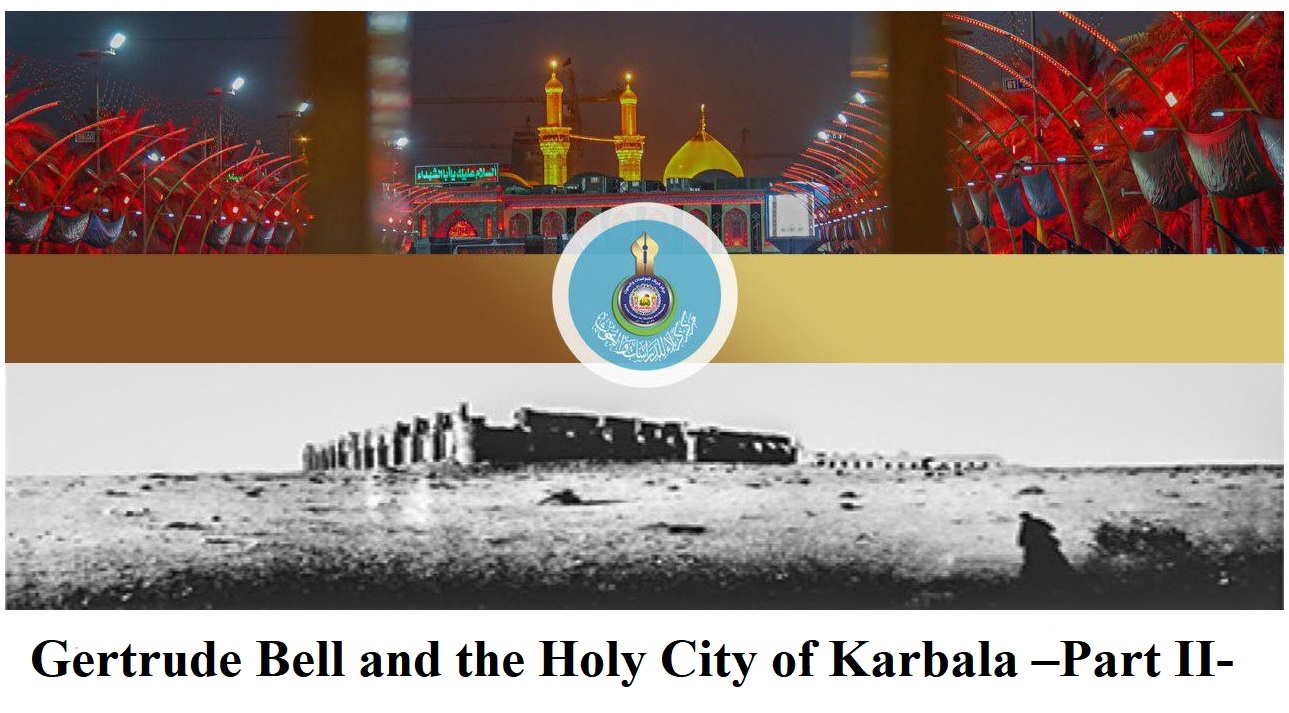Bell's letters and diaries, which record her first impressions of Ukhaidir, make it clear that she at first believed the palace to be a sixth-century Lakhmid construction, contemporary with the other Lakhmid towns known to be strung out over the Mesopotamian desert to the west of the Euphrates River.
Given its assumed identity and her belief that no one had previously planned such a place, it was an exciting prospect to investigate an edifice about which nothing had been properly studied and published. She set to work immediately, endeavoring to carefully plan the structure in its entirety and to photograph its many elements, no doubt with the objective of completing a full, publishable description upon her return to England.
Bell's planning of Ukhaidir was rudimentary yet thorough. B.T. Watts, her travelling companion, had his surveying instruments, possibly a theodolite, and supplied her with measurements for the long outer and inner lengths of Ukhaidir's fortifications and castle within. All other measurements at Ukhaidir, however, were made by Bell with a simple tape measure and foot rule.
Bell's measurements were duly marked in several pages of a field notebook, in which she produced sketch plans of the various sectors of the complex and their features.
The challenges of planning such an enormous and complicated edifice must have been formidable, but Bell was determined to get a complete and accurate record of the palace, spending two full days taking measurements of Ukhaidir's walls, towers and gates, and receiving the assistance of the men from her travel entourage. They took turns holding her measuring tape and carrying her camera: ‘In a day they have learnt exactly what it is I want and they are infinitely useful to me for I simply have to walk after them with my sketch book and write down the figures from the tape.
Once her measurements had been made, Bell drew the ground floor of the whole complex out to scale, lying on the floor of one of the cool, shady rooms of the castle's stable, her own tents too dusty during the daytime for such careful work.
She also measured the two upper storeys of the castle on the day before her departure. In all, she completed the entire task with some pride, remarking that her plan worked out to within 40 cm of Mr Watt's measurements taken on the first day. It was this plan that was reproduced in the first two of Bell's publications to describe her findings at Ukhaidir, these appearing in 1910 and 1911, respectively.
Source:
In Search of Kings and Conquerors, Gertrude Bell and the Archaeology of the Middle East - Lisa Cooper
[Pg. 108-110].

